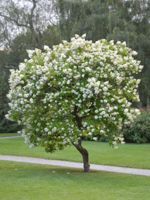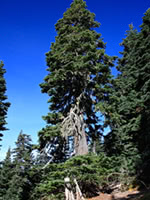Mon-Fri 9am - 5pm Mountain time
Japanese Tree Lilac vs Western Red Cedar
Syringa reticulata
Thuja plicata
NOT AVAILABLE THIS SEASON - MIGHT RETURN
NOT AVAILABLE THIS SEASON - MIGHT RETURN
Japanese Tree Lilac is an attractive, heavy-flowering lilac with fragrant white blossoms. It can be pruned to a single stem or grown as a multi-stemmed shrub.
Japanese Tree Lilac's dark reddish-brown bark peels as the tree ages, creating visual appeal for any yard, especially in the winter.
This tree is often planted along boulevards and its attractive white flowers signal spring to all who drive by.
Western Red Cedar is native to the Pacific Northwest, and is the largest tree in the cypress family. Featuring horizontal branching with scale-like dark green foliage that has a strong aroma. The wood is naturally durable and light, and is resistant to decay and insects, making it sought after for house siding, paneling, furniture, and fences. This is British Columbia's official tree.
Japanese Tree Lilac Quick Facts
Western Red Cedar Quick Facts
In row spacing: 0.9 m (3 ft)

